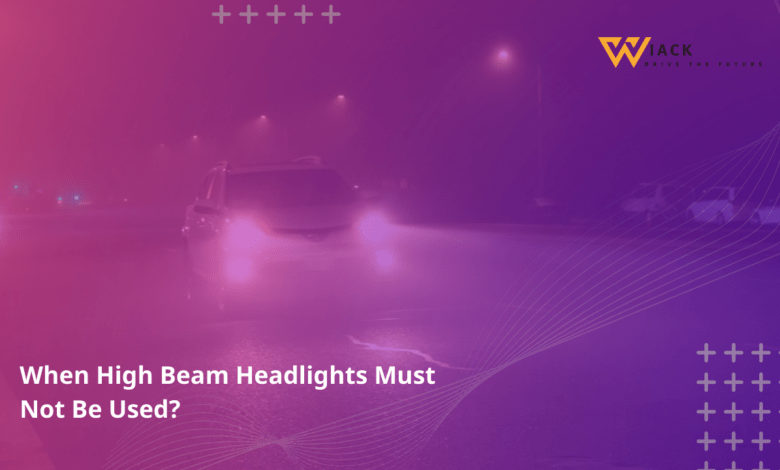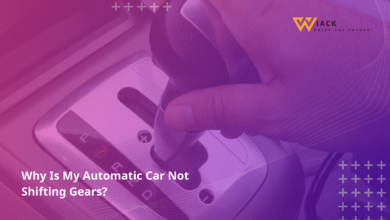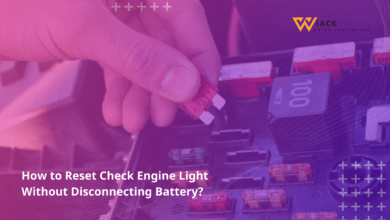When High Beam Headlights Must Not Be Used?

Did you know that improper use of high beam headlights contributes to over 16,000 accidents in the United States each year? This startling statistic highlights the critical importance of understanding when and how to use your vehicle’s high beams. In this comprehensive guide, we’ll explore the crucial moments when high beam headlights must not be used, ensuring your safety and the safety of others on the road.
Introduction
Driving at night presents unique challenges, with reduced visibility being a primary concern. High beam headlights are designed to illuminate the road ahead, providing drivers with a clearer view of potential hazards. However, the improper use of high beams can create dangerous situations for both you and other drivers on the road.
Importance of High Beam Headlights
High beam headlights play a vital role in nighttime driving safety. They typically illuminate the road 350 to 400 feet ahead, which is about twice the distance of low beams. This extended visibility allows drivers to:
- Spot potential hazards earlier
- React more quickly to unexpected obstacles
- Navigate unfamiliar roads with greater confidence
- Reduce the risk of collisions with wildlife or pedestrians
For example, when driving on a dark rural road at 55 mph, high beams can provide you with an extra 3-4 seconds of reaction time compared to low beams. This additional time can be the difference between avoiding an accident and a potentially catastrophic collision.
Dangers of Incorrect High Beam Use
While high beams are essential for safe nighttime driving in certain conditions, their misuse can lead to serious consequences. Some of the dangers associated with incorrect high beam use include:
- Temporarily blinding other drivers: The intense light from high beams can cause temporary vision impairment for oncoming drivers, potentially leading to accidents.
- Reducing visibility in adverse weather: In fog, rain, or snow, high beams can actually decrease visibility by reflecting off water droplets or snowflakes in the air.
- Creating glare for drivers ahead: When used too close to vehicles in front, high beams can create distracting glare in rearview and side mirrors.
- Increasing the risk of rear-end collisions: Drivers blinded by high beams may suddenly slow down or swerve, increasing the risk of being rear-ended.
- Legal consequences: Improper use of high beams can result in traffic citations and fines in many jurisdictions.
Understanding these risks emphasizes the importance of knowing exactly when high beam headlights must not be used. Let’s delve into the specific situations where using high beams is not only dangerous but often illegal.
When to Avoid High Beams
Knowing when to switch from high to low beams is crucial for safe and courteous driving. Here are the key situations where high beam headlights must not be used:
Approaching Vehicles
One of the most critical times to avoid using high beams is when approaching oncoming traffic. The intense light from high beams can temporarily blind oncoming drivers, creating a dangerous situation for everyone on the road.
Distance Requirements
The general rule across most states is that high beam headlights must not be used within a certain distance of oncoming vehicles. While the exact distance varies by state, a common requirement is:
High beam headlights must not be used within 500 feet of an oncoming vehicle.
To visualize this distance, imagine about one and a half football fields between you and the oncoming car. When you see headlights approaching in the distance, it’s best to switch to low beams well before reaching this 500-foot mark to ensure you don’t inadvertently blind the other driver.
State-Specific Regulations
While the 500-foot rule is common, some states have slightly different requirements. Here’s a breakdown of high beam regulations in several states:
| State | Distance Requirement |
|---|---|
| California | 500 feet |
| Florida | 500 feet |
| New York | 500 feet |
| Texas | 500 feet |
| Illinois | 500 feet |
| Pennsylvania | 500 feet |
| Ohio | 500 feet |
| Georgia | 500 feet |
| North Carolina | 400 feet |
| Michigan | 500 feet |
It’s important to note that while these distances provide a general guideline, the safest practice is to switch to low beams as soon as you see an oncoming vehicle, regardless of the exact distance.
Following Vehicles
Using high beams when following another vehicle is another situation where caution is necessary. The bright light reflected in the mirrors of the vehicle ahead can be distracting and potentially dangerous for that driver.
Distance Requirements
Most states specify a distance at which high beam headlights must not be used when following another vehicle. The typical requirement is:
High beam headlights must not be used within 200 to 300 feet of the vehicle you are following.
This distance is roughly equivalent to 15-20 car lengths. When you find yourself closing in on another vehicle at night, it’s crucial to switch to low beams to avoid creating glare in their mirrors.
State-Specific Regulations
As with approaching vehicles, the exact distance requirements for following vehicles can vary by state. Here’s a sample of regulations from different states:
| State | Following Distance Requirement |
|---|---|
| California | 300 feet |
| Florida | 200 feet |
| New York | 200 feet |
| Texas | 300 feet |
| Illinois | 200 feet |
| Pennsylvania | 200 feet |
| Ohio | 200 feet |
| Georgia | 200 feet |
| North Carolina | 200 feet |
| Michigan | 200 feet |
Remember, these distances are minimums. It’s always better to err on the side of caution and switch to low beams earlier to ensure the comfort and safety of drivers ahead of you.
Stop-and-Go Traffic
In heavy traffic or urban areas with frequent stops, high beam headlights must not be used at all. The close proximity of other vehicles and the constant change in traffic flow make high beams both unnecessary and potentially hazardous.
In stop-and-go traffic situations:
- Rely on your low beams for adequate visibility
- Be aware of pedestrians and cyclists who may be harder to see
- Pay extra attention to traffic signals and road signs
- Maintain a safe following distance to avoid sudden stops
Using high beams in these conditions not only risks blinding other drivers but can also make it harder for you to see important visual cues in your immediate surroundings.
Adverse Weather Conditions
While it might seem counterintuitive, there are several weather conditions where high beam headlights must not be used because they can actually reduce visibility and create dangerous driving conditions.
Fog
Fog is perhaps the most critical weather condition where high beams should be avoided. When driving in fog:
- Use low beam headlights only
- Reduce your speed significantly
- Increase your following distance
- Use fog lights if your vehicle is equipped with them
The reason high beams are ineffective in fog is that the intense light reflects off the water droplets in the air, creating a wall of glare that makes it even harder to see. This phenomenon can lead to a false sense of security and increase the risk of accidents.
Rain
During heavy rain, high beam headlights must not be used because:
- They can create glare by reflecting off the wet road surface
- The intense light can be scattered by raindrops, reducing overall visibility
- Other drivers may have difficulty judging your distance and speed
Instead, use your low beams and windshield wipers to maintain the best possible visibility. If the rain is extremely heavy, consider pulling over to a safe location until conditions improve.
Snow
Snowy conditions present similar challenges to fog and rain when it comes to high beam usage. When driving in snow:
- Stick to low beams to avoid light reflection off snowflakes
- Clear all snow from your headlights before driving
- Use extra caution when passing snowplows or other vehicles
The reflective nature of snow can amplify the glare from high beams, making it difficult for both you and other drivers to see clearly. By using low beams, you’ll maintain better visibility and reduce the risk of accidents in these challenging conditions.
FAQs
To further clarify when high beam headlights must not be used, let’s address some frequently asked questions about high beam usage:
What are the general rules for high beam use?
The general rules for high beam use include:
- Use high beams on dark, rural roads with no oncoming traffic
- Switch to low beams when approaching or following other vehicles
- Avoid high beams in adverse weather conditions
- Never use high beams in well-lit urban areas
Can I use high beams on highways?
Yes, you can use high beams on highways, but only when:
- There is no oncoming traffic within 500 feet
- You are not following another vehicle within 200-300 feet
- Weather conditions are clear
Remember to switch back to low beams promptly when these conditions change.
What are the high beam rules in Florida?
In Florida, high beam headlights must not be used within:
- 500 feet of an approaching vehicle
- 300 feet of a vehicle you are following
Additionally, Florida law requires drivers to use low beams in fog, rain, or smoke.
Is it legal to use high beams during the day?
While it’s generally not illegal to use high beams during the day, it’s unnecessary and can be distracting to other drivers. Daytime running lights or low beams are sufficient for daytime visibility.
In what situations should high beams be avoided?
High beams should be avoided:
- In urban areas with street lighting
- When approaching or following other vehicles
- In fog, heavy rain, or snow
- When there’s oncoming traffic
- In stop-and-go traffic
How far do high beams typically illuminate?
High beams typically illuminate the road 350 to 400 feet ahead, which is about twice the distance of low beams. This extended visibility is crucial for safe nighttime driving on dark roads.
Are there legal consequences for improper high beam use?
Yes, improper use of high beams can result in traffic citations and fines. The exact penalties vary by state but can include:
- Monetary fines (typically $50-$200)
- Points on your driving record
- Increased insurance premiums
Why use high beams on highways?
High beams are useful on highways because:
- They provide better visibility at high speeds
- They help drivers spot potential hazards earlier
- They improve reaction times to unexpected obstacles
However, it’s crucial to switch to low beams when other vehicles are present.
Should high beams be used in fog?
No, high beam headlights must not be used in fog. They reflect off the water droplets in the air, creating a wall of glare that reduces visibility. Use low beams or fog lights instead.
Can I use high beams during the day in heavy rain?
Using high beams during the day in heavy rain is not recommended. The intense light can reflect off the wet road surface and raindrops, potentially creating glare for other drivers. Stick to low beams or daytime running lights in these conditions.
Conclusion
Understanding when high beam headlights must not be used is crucial for safe and responsible driving. By following the guidelines outlined in this article, you can significantly reduce the risk of accidents and ensure a safer driving experience for yourself and others on the road.
Remember the key points:
- Switch to low beams when approaching or following other vehicles
- Avoid high beams in adverse weather conditions
- Use high beams judiciously on dark, rural roads
- Always prioritize safety and courtesy when using your headlights
By mastering the proper use of high beams, you’re not just following the law – you’re actively contributing to road safety. So the next time you’re driving at night, take a moment to consider your headlight usage. Your attentiveness could make all the difference in preventing accidents and ensuring everyone reaches their destination safely.
Stay safe, stay aware, and remember: when in doubt, dim those lights!
Get the latest car news, reviews, and prices at Wiack.com. Your one-stop destination for all things automotive.




